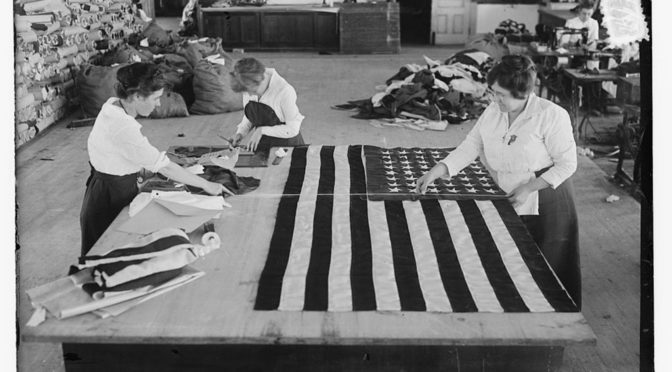One hundred years ago this week, the United States of America rose to assist its European allies and officially declared war on Germany.
This was an unprecedented moment in this country’s history, a signal of its rising importance on the world stage and a declaration of the United States as the standard bearer of democracy.
But this declaration was also a delayed reaction. In most ways, America was already at war.
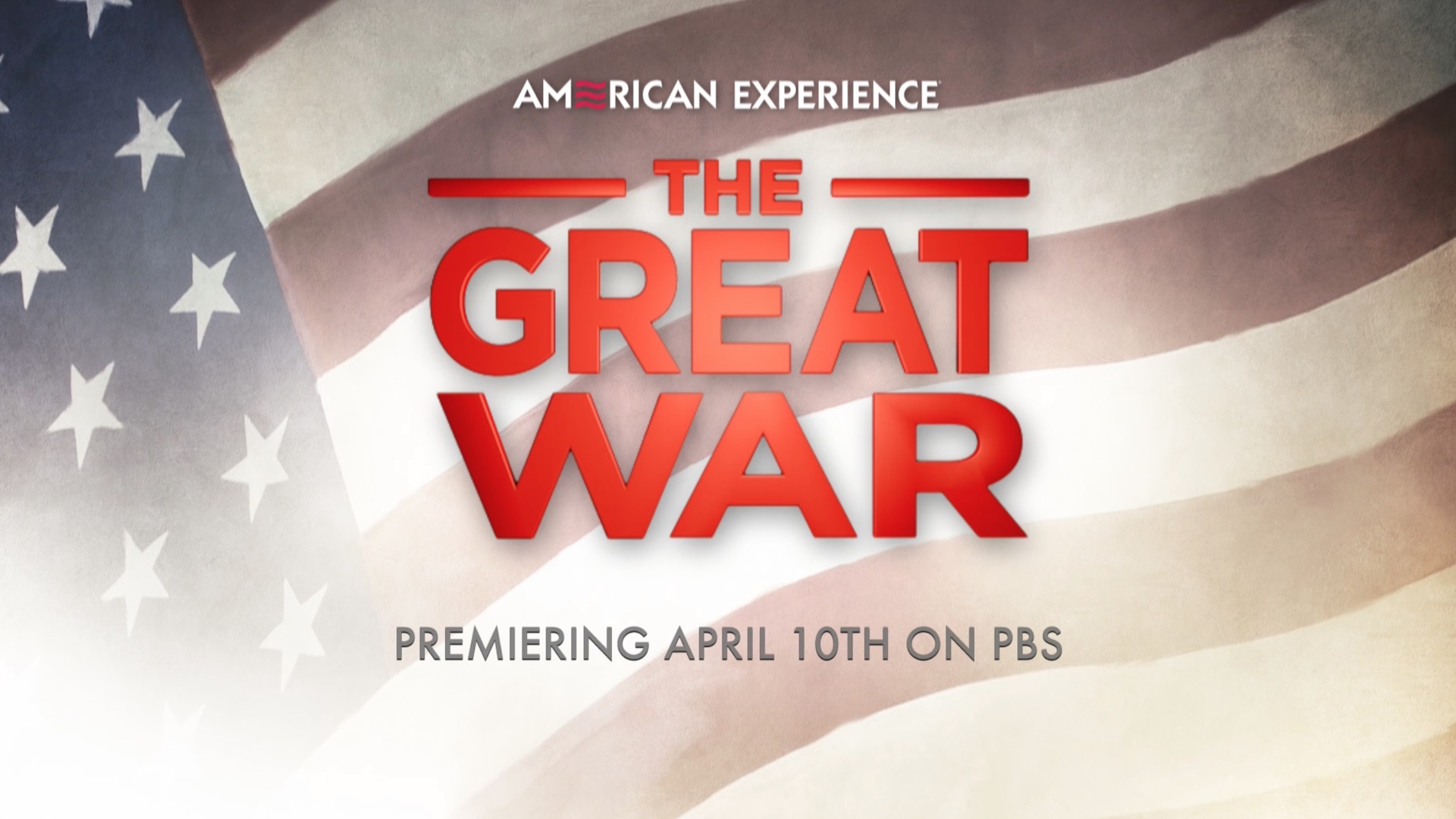
PBS marks this important moment in history with an intense three-part mini-series The Great War, looking at this country’s involvement in the European conflict from vivid and surprisingly fresh angles.
Below: An exclusive clip from The Great War, of the initial influence of Tin Pan Alley on the early opinions of Americans:
My confession: I love great historical stories of war, but I do not always like war documentaries. There’s a certain uniformity to many of them that’s rather numbing — black-and-white stock footage of smoky battlefields, static maps of troop movement, battles without context. Wars are sometimes presented as impressive events, devoid of humanity.
The Great War is rather unique (and potentially frustrating for some true war-history fanatics), easing deliberately into discussion of the conflict in the same way that Americans would have learned of it themselves during the summer of 1914.
The assassination of Franz Ferdinand, heir to the Austro-Hungarian throne, by members of the revolutionary movement Young Bosnia, did not seem like the sort of event that would concern the dinner conversations of regular Americans. Many believed themselves isolated from those sorts of conflicts by an ocean; if anything, the Gilded Age proved that the United States was equal, if not greater, to those foreign cultures.
At yet, as the situation escalated, bringing in Germany, Russia, France and eventually Great Britain into the conflict, it would seem the United States would be dragged in as well — whether its leaders admitted it or not.
The Flatiron Building, for a time, became a war recruitment office.

The first part of The Great War (airing Monday night) takes the temperature of America from 1914 to 1917, a country torn into sympathizers and pacifists.
Because of this country’s unique make-up of immigrants, the European struggle ignites a thousand smaller conflicts here. Many race to their old homelands. Suffragists, in a struggle for their basic rights, ignite an anti-war movement. President Wilson, in a fierce re-election bid in 1916, brandishes the slogan ‘He Kept Us Out of War’.
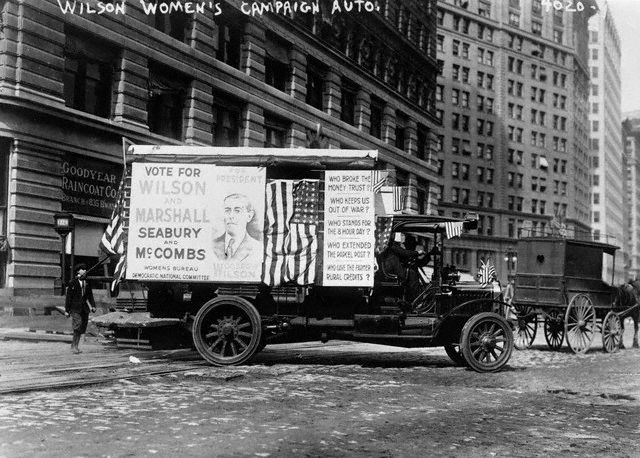
But in fact, America was already engaged in the conflict — on both sides of the battle, depending on who you were and where you lived in America. German immigrants felt embattled and rallied for peace. But events such as the sinking of the Lusitania and the explosion at Black Tom Island soon turned the opinions of most American to the cause of war. How then could a powerful nation enter such a conflict from thousands of miles away?
A faux battleship was constructed in Union Square in 1917 to encourage participation in the war effort:
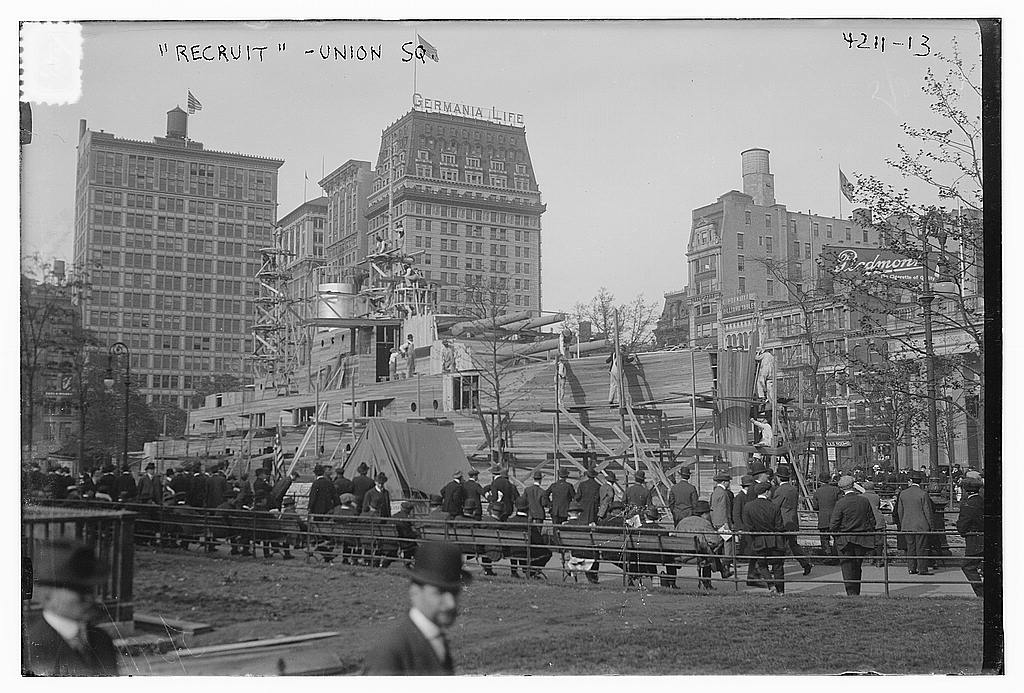
Part Two (airing Tuesday, April 11) explores the mobilization and training of American forces. But while the documentary does follow a set of individual stories of men going to war (such as that of Alan Seeger, a Greenwich Village poet ), it spends a significant time on American shores, observing the efforts of many (led by Wilson’s propaganda chief George Creel) to drum up excitement and patriotism — and others whose opposition to war remains steadfast.
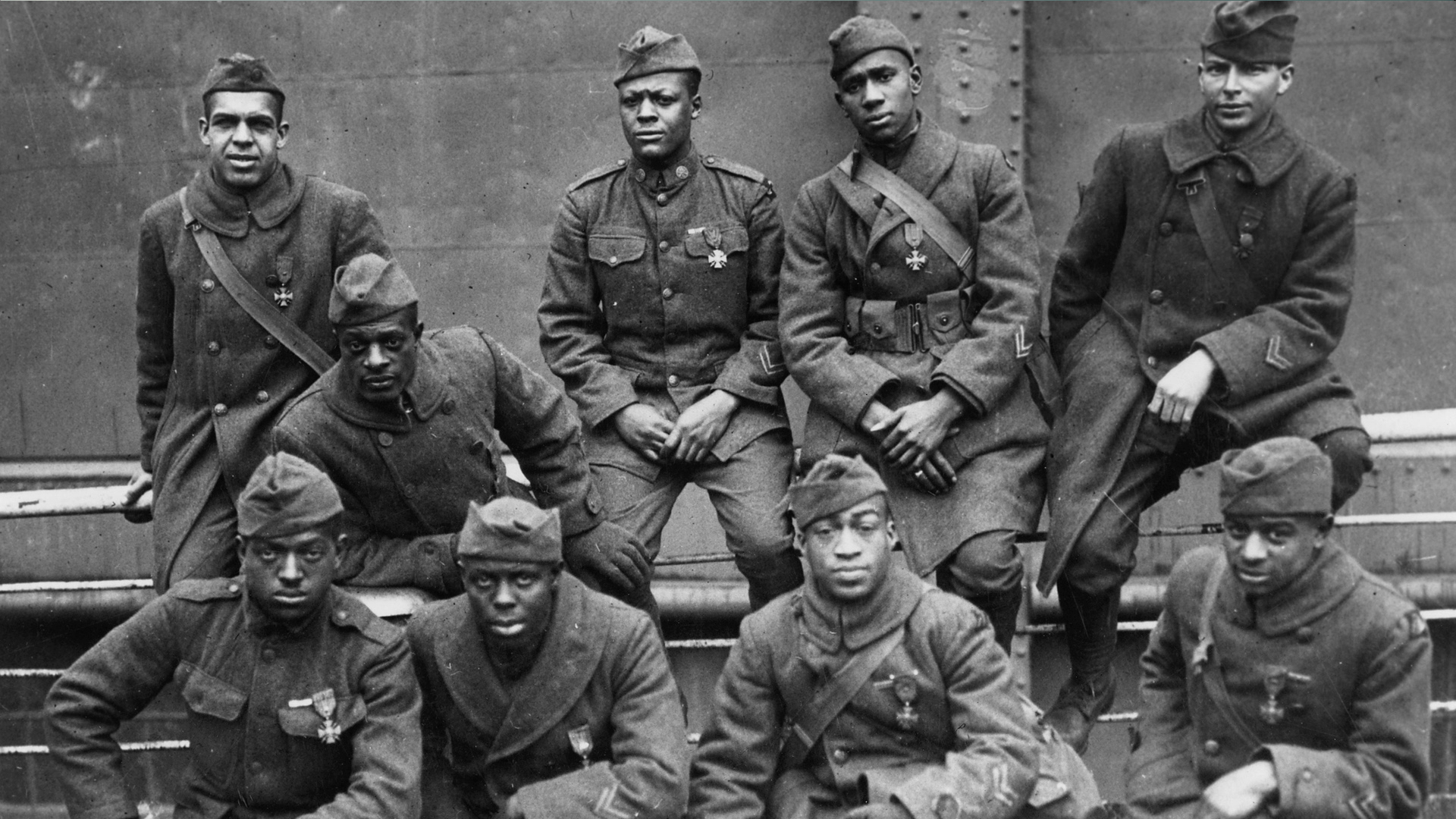
We do follow the journey of one entire squad of soldiers, and it’s a truly amazing tale — the Harlem Hellfighters, the first African-American regiment to engage in the conflict. They were assigned to the French Army as many American troops refused to fight alongside them. What the French got was a well-trained, precise and sometimes vicious squadron. (Thanks to the under appreciated James Reese Europe, they also had a renown military band.)
Below: An exclusive clip from The Great War, of national outrage in 1918 of ‘slackers’ and an extraordinary raid in New York City.
It’s not until Part Three (airing Wednesday) that American forces, led by General John J. Pershing, are fully engaged along the Western Front.
By this time, tens of thousands of Allied soldiers had been killed, The film’s unique point of view can be unsettling at times; there are so many perspectives to tell — and the filmmakers should be credited with this uniquely 21st century approach — that the larger canvas of war and its cruel atrocities often leaves center stage for a time, only to come crashing into the narrative with jarring force.
There’s no escape in Part Three. The battles of the Hundred Day Offensive are depicted in ominous, almost otherworldly detail. Meanwhile, back in the United States, campaigns to drive ‘slackers’ and anti-war agitators into the open tramples upon basic constitutional rights and escalates the fears of regular Americans.
Over six hours, The Great War leaves you sorrowful, exhilarated and hungry to learn more.  I’d recommend pairing this with another Europe-focused film series — the BBC’s The First World War or, for something older, the epic 1964 series produced by England, Canada and Australia — also called The Great War.
During the live broadcast, please following along with me on Twitter @BoweryBoys where I’ll be sharing trivia about American and its involvement in World War I throughout the show.
THE GREAT WAR
PBS, American Experience
Debuting April 10, 9/8C
Check your local listings

